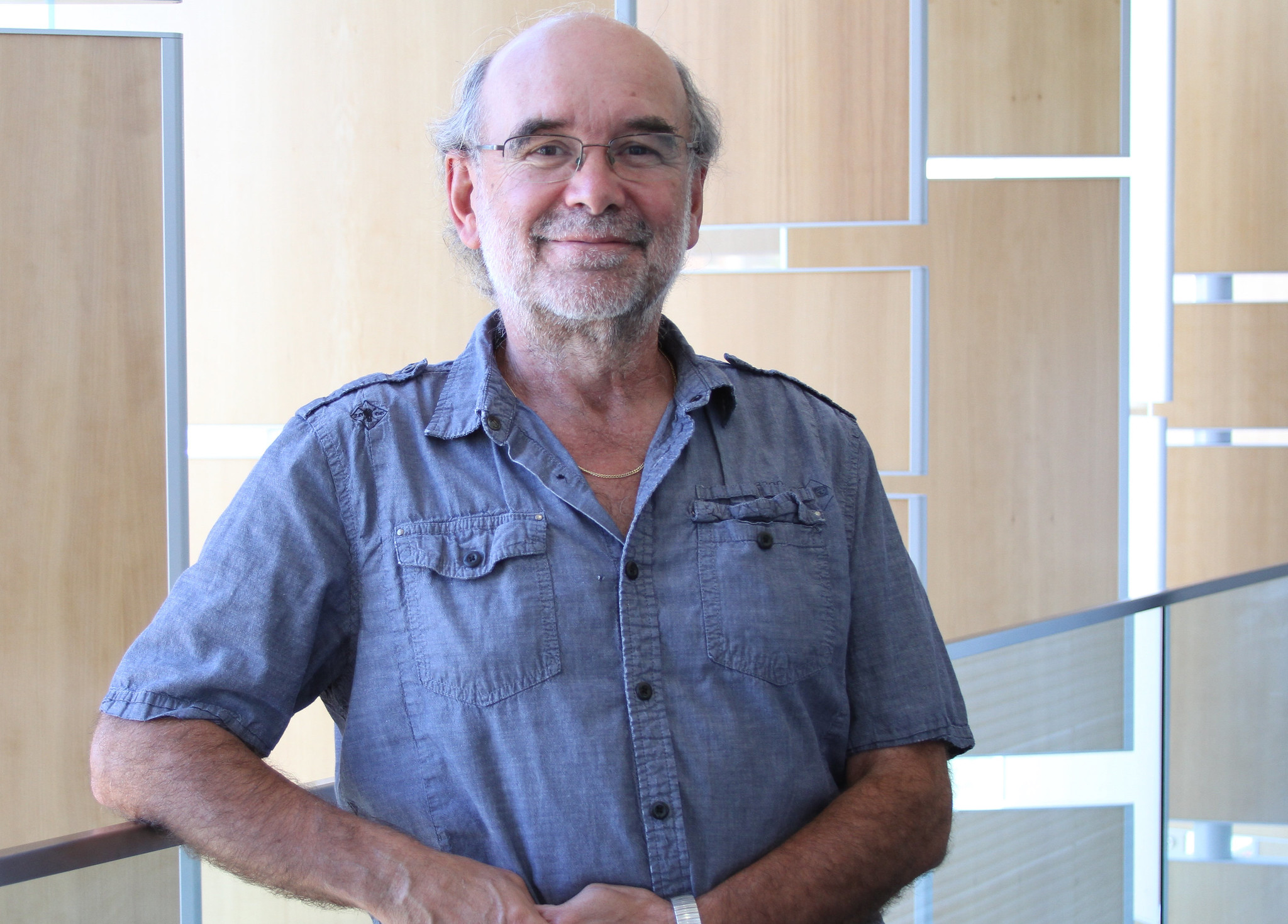Smart virus paired with anti-cancer drug offers promising new treatment

Cancer-killing or oncolytic viruses have opened exciting avenues in the fight against hard-to-treat cancers. A new study combines the oncolytic virus Myxoma with a popular anti-cancer drug. The promising results suggest the treatment improves the replication of the virus, enhancing its effectiveness. Graphic by Jason Drees
Despite significant medical advances, many types of cancer remain frustratingly difficult to treat.
But a novel combined therapy using a cancer-killing virus offers a fresh ray of hope, especially for cancers that are resistant to traditional care.
In a new study, Masmudur Rahman, a researcher and assistant professor in the Biodesign Center for Immunotherapy, Vaccines and Virotherapy at Arizona State University, and his colleagues demonstrate that the Myxoma virus (MYXV) can increase its cancer-killing or oncolytic properties when combined with the cancer-fighting drug Selinexor.
The research demonstrates, for the first time, that combining Selinexor with MYXV significantly reduces tumor size and extends survival in both laboratory cell cultures and a mouse model. The observed synergy between Selinexor and MYXV provides a promising avenue for the development of new anti-cancer treatments.
“This new research demonstrates that combination of anti-cancer therapies that can work synergistically, providing more therapeutic benefits," Rahman said.
The research appears in the current issue of the journal Cancer Research Communications.
A new paradigm for cancer therapy
Oncolytic virotherapy makes use of a particular class of viruses that have the unique capacity to selectively infiltrate and obliterate cancerous cells while leaving healthy cells and tissues unscathed. This selectivity can be intrinsic due to the nature of the virus, or it can be engineered into the virus.
Masmudur Rahman
The mechanisms by which oncolytic viruses target and kill cancer cells are multiple and complex. They include direct oncolysis (destruction of the tumor cells), immune stimulation (activating the immune system to attack the tumor) and vascular disruption (targeting the blood supply of the tumor). Some oncolytic viruses can be engineered to express therapeutic genes that further enhance their anti-cancer effectiveness.
Further, unlike conventional cancer drugs, oncolytic viruses can replicate within the tumor, increasing their concentration at the site of the disease without the need for increasing the dosage. They have been recognized as promising candidates for treatment-resistant and metastatic cancers.
MYXV, the oncolytic virus described in the current study, is a poxvirus that naturally infects rabbits but is harmless to humans. MYXV has gained attention in the field of oncolytic virotherapy due to its safety profile and selective oncolytic potential. Research has shown that the MYXV virus selectively infects and kills various types of cancer cells, including gliomas, pancreatic cancer and myeloma cells, among others. This selectivity is believed to be due to alterations in signaling pathways in cancer cells that favor the replication of the virus.
Like other oncolytic viruses, the MYXV virus has the potential to stimulate the immune system to attack cancer cells, providing an additional layer of anti-tumor activity.
Anti-cancer synergy
While a limited number of cancer-destroying viruses have already been approved for human use, certain research hurdles must be overcome to achieve the full therapeutic benefits from this approach.
One of the challenges in using oncolytic viruses for cancer treatment is the variety and complexity of cancer cells within the tumor bed, which can affect the ability of these viruses to effectively replicate. The new research delves into these virus-cancer cell interactions and highlights an innovative strategy to overcome this limitation.
In the case of some cancers, a cellular protein called DHX9 forms antiviral granules in the cytoplasm that restrict MYXV's replication, preventing it from killing the cancer cells. When the researchers inhibited a protein called XPO-1 (involved in transporting material out of the cell nucleus), the DHX9 granules got stuck inside the cell nucleus. This allowed MYXV to replicate more freely, killing more cancer cells. This is the first report demonstrating that blocking a cell’s nuclear export pathway can enhance the replication and cancer-killing activity of a virus.
To inhibit XPO-1, scientists used a drug called Selinexor, already approved by the FDA for use in patients with certain types of blood cancers. When combined with the oncolytic MYXV virus, Selinexor not only increased viral replication but also led to less cancer cell growth, more cancer cell death and overall reduced tumor size in mice, without significant toxicity.
By combining the viral replication-promoting effects of Selinexor with the cancer cell-killing properties of MYXV, researchers are harnessing the power of these therapies to overcome barriers to viral replication and increase overall treatment effectiveness.
Unraveling molecular interactions
To gain deeper insights into the molecular interactions involved in the enhanced therapeutic effect, the researchers performed a large-scale protein analysis. This allowed them to identify the specific host and viral proteins affected by the combination therapy.
The results of the analysis revealed that Selinexor and MYXV, when used in combination, altered the expression of key proteins involved in cancer cell growth and survival. By modulating the activity of these proteins, the combination therapy disrupted cancer cell signaling pathways, improving therapeutic results.
Understanding these subtle interactions will guide further optimization of the treatment and potential development of more effective strategies against difficult-to-treat cancers.
New directions, clinical implications
The successful combination of Selinexor and MYXV in laboratory settings and the mouse model highlights the potential of this treatment approach for further development and eventual clinical translation.
Grant McFadden
Rahman and his colleagues are now focusing on further preclinical and clinical studies to validate the potential of this combination therapy. Their goal is to refine the treatment regimen and investigate its effectiveness in a broader range of cancer types and models.
“This new discovery came about from the lab’s fundamental studies on how viruses and cells interact,” said Grant McFadden, who directs the Biodesign Center for Immunotherapy, Vaccines and Virotherapy and is a professor with ASU's School of Life Sciences. “It is a classic example of how new therapies can arise from basic research into virus-host interactions.”
As the understanding of the intricate interactions between viruses, cancer cells and the immune system deepens, the field of oncolytic virotherapy continues to evolve. With ongoing research efforts, there is a growing optimism that combination therapies involving oncolytic viruses and anti-cancer drugs will play a crucial role in revolutionizing cancer treatment and improving patient outcomes.
More Science and technology

Hidden viruses thrive in desert wildlife
As the sun rises over the Sonoran Desert, bright green lovebirds gather noisily around backyard feeders. At dusk in the Arizona…

2 ASU faculty named NAI fellows
Professors Krishnendu Chakrabarty and Rosa Krajmalnik-Brown are among the latest Arizona State University faculty members to be…

How AI is changing college
Artificial intelligence is the “great equalizer,” in the words of ASU President Michael Crow.It’s compelled industries, including…

